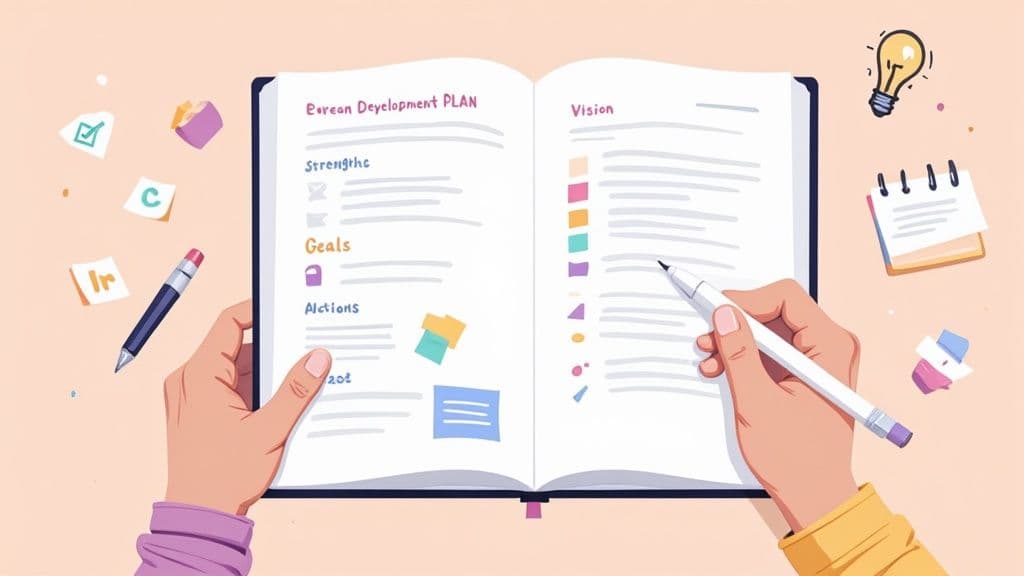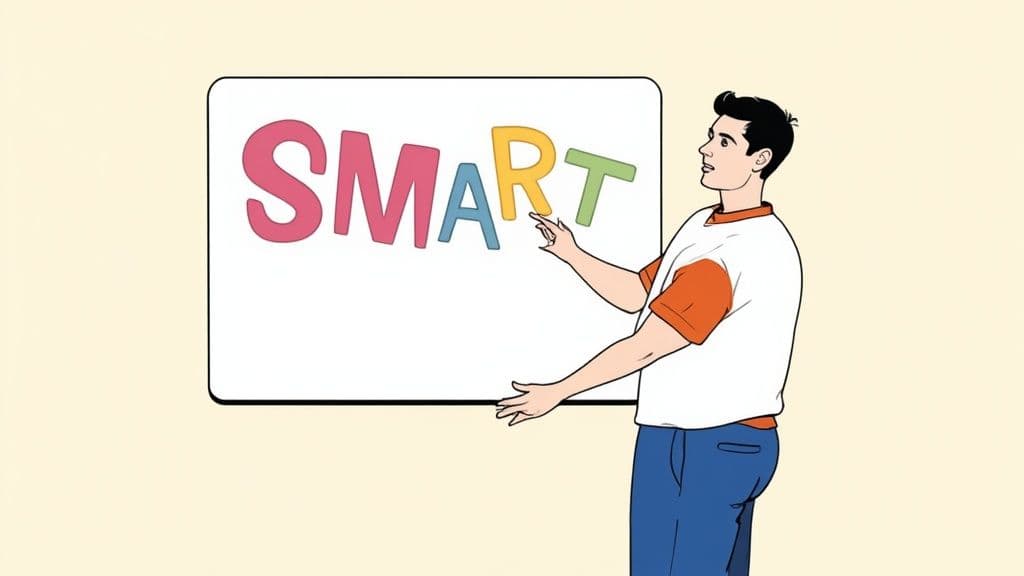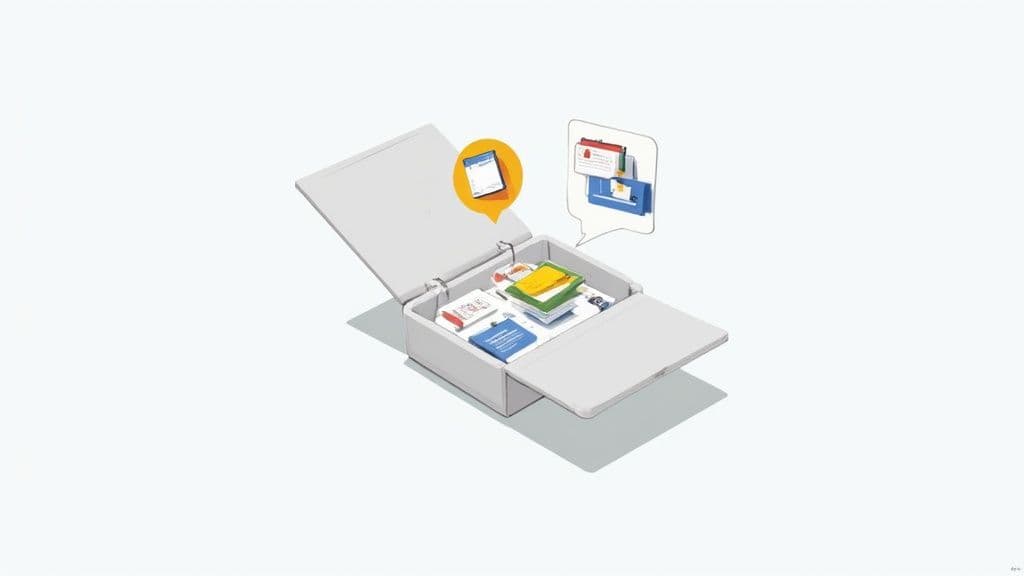Stop drifting and start designing your life. This practical personal development plan template helps you set meaningful goals, build the skills you need, and create a clear habit-driven path to lasting change.
September 23, 2025 (1mo ago) — last updated November 17, 2025 (2d ago)
Personal Development Plan Template
Practical personal development plan template and guide to set goals, build skills, schedule progress, and adapt with weekly and monthly reviews.
← Back to blog
Personal Development Plan Template
Stop drifting and start designing your life. Use this personal development plan template and guide to set meaningful goals, build the skills you need, and create lasting change.

Why You Need a Plan Beyond Just Goals
Most of us react to what comes our way instead of steering our own ship. We set goals like “get a promotion” or “be healthier,” but without a system they often stay fuzzy daydreams. A personal development plan turns those wishes into a clear, actionable roadmap that aligns your daily actions with your long-term vision.
Writing your goals down forces abstract ideas into concrete steps. That structure stops the feeling of being busy but not moving forward. Instead of piling on tasks, a solid plan makes sure the tasks you do actually matter.
From Reacting to Intentionally Creating
A plan helps you proactively build the life you want by ensuring your daily actions support your bigger purpose. This approach creates focus and momentum, so effort becomes meaningful rather than scattered.
Personal development is a growing global trend; the market for personal development services and products is expanding rapidly1.
The Real Purpose of a Plan
A good plan helps you:
- Gain clarity: Understand where you are and where you want to be.
- Maintain focus: Keep your eye on priorities when life gets noisy.
- Build momentum: Break big goals into small, achievable wins that increase confidence.
A personal development plan is the bridge between your dreams and your reality. It’s a system for continuous growth that helps you become the person you want to be, one intentional step at a time.
7 Steps to Design Your Personal Development Plan Template
The best plans are simple, personal, and actionable. Treat your template as a living document that reflects what truly drives you. Start by getting honest about your current reality.
1. Start with an Honest Self-Assessment
You can’t map a journey without knowing your starting point. Go beyond job titles and identify your core strengths, weaknesses, and the skills you use every day.
Answer these questions in a notebook or document:
- What activities energize me? These often point to natural strengths.
- What tasks do I avoid or dread? This signals skill gaps or low confidence.
- What consistent feedback have I received? Look for recurring themes.
- What skills do I admire in others? These show where you might want to grow.
This assessment becomes the foundation of your plan.

2. Define Your Core Sections
A well-designed template includes a few key components that translate insights into action. Use this structure in your document or on a single page so it’s easy to update.
Core Sections of a Personal Development Plan
| Section Component | Purpose and Key Questions to Ask |
|---|---|
| Vision Statement | Your “why.” What kind of impact do you want to make? What’s your ultimate aspiration? |
| Current Reality / Self-Assessment | Where are you now? What are your strengths and gaps? What external factors could help or hinder you? |
| Development Goals | Pick 2–3 SMART goals for the next 6–12 months. How will you measure success?2 |
| Action Plan & Strategies | For each goal, list concrete steps, resources, and support. What books, courses, or mentors will you use? |
| Timeline & Milestones | Break actions into deadlines and checkpoints. What are the key milestones along the way? |
| Support & Accountability | Who will support and hold you accountable? A mentor, manager, peer, or friend? |
These sections guide you from vision to daily action.
3. Create a Compelling Vision
Your vision statement should answer: “What impact do I want to make?” It’s a concise, motivating sentence you’ll return to on tough days. Balance ambition with realism and include self-care so you don’t burn out as you pursue growth.
If you want a deeper framework for self-knowledge, explore approaches like life-path systems that help align goals with your core nature, or read our guide to developing self-awareness. The Life Purpose App is another resource for clarifying purpose and life goals4.
Setting Goals That Genuinely Motivate You
Goals are the engine of any plan, but they must connect to what truly motivates you. A perfectly structured SMART goal won’t stick if it doesn’t light a fire inside.
Find goals that align with your values and natural tendencies. For example, someone whose strengths are creativity and storytelling will likely be more motivated by “develop an innovative marketing campaign that tells a compelling story and boosts sales” than by a dry sales target.
From Vague Ideas to Inspiring Actions
Turn “I want to be healthier” into a goal that connects to meaning and action:
- Vague: Be healthier.
- Aligned, actionable: “I will build a sustainable wellness routine so I can be a more present and energetic parent. I’ll prep three healthy family meals a week, walk for 30 minutes four times a week, and practice a 10-minute mindfulness exercise each morning.”
The second version ties to family, lists specific actions, and paints a clear picture of success. That personal connection fuels lasting motivation.
Turning Your Big Goals Into Daily Actions
An inspiring plan only matters if you act on it. Break long-term goals into small, manageable steps and build a consistent routine that survives busy weeks.
Build Your Resource List
For each goal, create a resource list that goes beyond “read a book.” Treat it like an advisory board for that goal:
- Books: 2–3 foundational titles.
- Podcasts: Ongoing learning sources.
- Mentors or experts: People you can learn from directly or follow online.
Listing resources gives you a concrete starting point whenever you feel stuck.
Schedule Your Development Time
Stop waiting for “when I have time.” Block development time in your calendar and treat it like a non-negotiable appointment with your future self. That could be 30 minutes each morning or an hour twice a week.
Use a 30-60-90 Day Framework
Structure progress in manageable phases:
- First 30 days — Build habits: Focus on small, consistent actions.
- Next 60 days — Apply and learn: Practice in low-stakes settings like team meetings or community groups such as Toastmasters3.
- Final 90 days — Expand and challenge: Push your skills into higher-stakes opportunities.
This phased approach builds confidence and prevents overwhelm.
How to Track Progress and Adapt Your Plan
A plan should evolve with you. Regular reviews let you spot what’s working and what needs to change. Adopt a simple rhythm of reflection and adjustment.

Establish a Regular Review Cadence
A reliable check-in routine keeps your plan alive:
- Weekly (15 minutes): Quick pulse check. What moved you forward this week? What’s the single most important next step?
- Monthly (1 hour): Deeper review. Are milestones on track? Do these goals still matter?
Be Honest and Celebrate Small Wins
Use reviews as a no-judgment space for honesty. If something isn’t working, adjust it. Also celebrate small wins—finishing a book chapter, having a difficult conversation, or keeping a habit for a week. Those moments fuel long-term progress.
Journaling is a powerful tool for reflection and tracking progress5.
Treat your plan like a GPS. If you hit a detour, don’t throw the map away—recalculate your route. Adapting your plan shows intelligence and resilience.
If recurring procrastination shows up, it may point to limiting beliefs. Start by identifying the belief, then test it with small experiments to build new evidence. For help, see our resources on overcoming limiting beliefs and goal-planning templates, including practical examples and worksheets at our goal planning templates and the Life Purpose App site4.
Common Mistakes to Avoid
- Setting vague goals: Be specific and measurable.
- Trying to do everything at once: Start with 2–3 focus areas.
- Forgetting your why: Connect goals to what truly matters to you.
Quick Q&A
Q: How do I start if I don’t know my priorities? A: Do an honest self-assessment. Track what energizes you and what drains you for two weeks, then look for patterns.
Q: How many goals should I have at once? A: Start with 2–3 primary goals. Nail those before adding more.
Q: What if life changes and goals no longer fit? A: Revise your plan. Regular reviews are meant to keep the plan aligned with your life.
Frequently Asked Questions
How often should I review my personal development plan? Aim for a 15-minute weekly pulse and a deeper monthly or quarterly review to adjust priorities and track milestones.
What’s the difference between a personal and a career development plan? A career plan focuses on professional skills and milestones. A personal plan includes career goals plus health, relationships, and whole-life improvements.
What makes a goal stick? Specificity, personal meaning, and an action plan you schedule into your calendar. Use SMART criteria and tie goals to your values for lasting motivation2.
Discover Your Life Purpose Today!
Unlock your true potential and find your life’s purpose.
